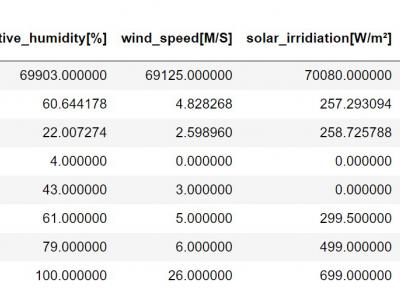Artificial Intelligence
The "RetroRevMatchEvalICIP16" dataset provides a retrospective reviewer recommendation dataset and evaluation for IEEE ICIP 2016. The methodology via which the recommendations were obtained and the evaluation was performed is described in the associated paper.
Y. Zhao, A. Anand, and G. Sharma, “Reviewer recommendations using document vector embeddings and a publisher database: Implementation and evaluation,” IEEE Access, vol. 10, pp. 21 798–21 811, 2022. https://doi.org/10.1109/ACCESS.2022.3151640
- Categories:
 296 Views
296 Views
Microwave-based breast cancer detection is a growing field that has been investigated as a potential novel method for breast cancer detection. Breast microwave sensing (BMS) systems use low-powered, non-ionizing microwave signals to interrogate the breast tissues. While some BMS systems have been evaluated in clinical trials, many challenges remain before these systems can be used as a viable clinical option, and breast phantoms (breast models) allow for rigorous and controlled experimental investigations.
- Categories:
 2634 Views
2634 Views
The files contain the trained networks (Alexnet, Resnet 18, VGG19, and SRN) for classify the upsampled quadrant data by wavelength.
- Categories:
 40 Views
40 Views
In this paper, the security-aware robust resource allocation in energy harvesting cognitive radio networks is considered with cooperation between two transmitters while there are uncertainties in channel gains and battery energy value. To be specific, the primary access point harvests energy from the green resource and uses time switching protocol to send the energy and data towards the secondary access point (SAP).
- Categories:
 529 Views
529 Views
Source code for the paper "On the Implementation of Behavior Trees in Robotics"
- Categories:
 146 Views
146 Views
The CoVID19-FNIR dataset contains news stories related to CoVID-19 pandemic fact-checked by expert fact-checkers. CoVID19-FNIR is a CoVID-19-specific dataset consisting of fact-checked fake news scraped from Poynter and true news from the verified Twitter handles of news publishers. The data samples were collected from India, The United States of America, and European regions and consist of online posts from social media platforms between February 2020 to June 2020. The dataset went through prepossessing steps that include removing special characters and non-vital information.
- Categories:
 6749 Views
6749 ViewsThe heating and electricity consumption data are the results of an energy audit program aggregated for multiple load profiles of a residential customer. These profiles include HVAC systems loads, convenience power, elevator, etc. The datasets are gathered between December 2010 and November 2018 with a one-hour timestep resolution, thereby containing 140,160 measurements, half of which is for heat or electricity. In addition to the historical energy consumption values, a concatenation of weather variables is also available.
- Categories:
 8184 Views
8184 Views
The DroneDetect dataset consists of 7 different models of popular Unmanned Aerial Systems (UAS) including the new DJI Mavic 2 Air S, DJI Mavic Pro, DJI Mavic Pro 2, DJI Inspire 2, DJI Mavic Mini, DJI Phantom 4 and the Parrot Disco. Recordings were collected using a Nuand BladeRF SDR and using open source software GNURadio. There are 4 subsets of data included in this dataset, the UAS signals in the presence of Bluetooth interference, in the presence of Wi-Fi signals, in the presence of both and with no interference.
- Categories:
 15590 Views
15590 ViewsThe objective of this dataset is the fault diagnosis in diesel engines to assist the predictive maintenance, through the analysis of the variation of the pressure curves inside the cylinders and the torsional vibration response of the crankshaft. Hence a fault simulation model based on a zero-dimensional thermodynamic model was developed. The adopted feature vectors were chosen from the thermodynamic model and obtained from processing signals as pressure and temperature inside the cylinder, as well as, torsional vibration of the engine’s flywheel.
- Categories:
 5223 Views
5223 Views


